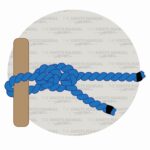A cleat hitch is one of the most basic knots every boater should know. They are essential for securely tying a vessel to another vessel or dock. There are many ways to tie a cleat hitch, but the technique must stay the same for the knot to remain secure.
Boaters should only use cleat hitches when a cleat is available. Other similar knots are more secure when a cleat is unavailable.
Follow the simple directions below to learn how to tie a cleat hitch.
What Is A Cleat Hitch?
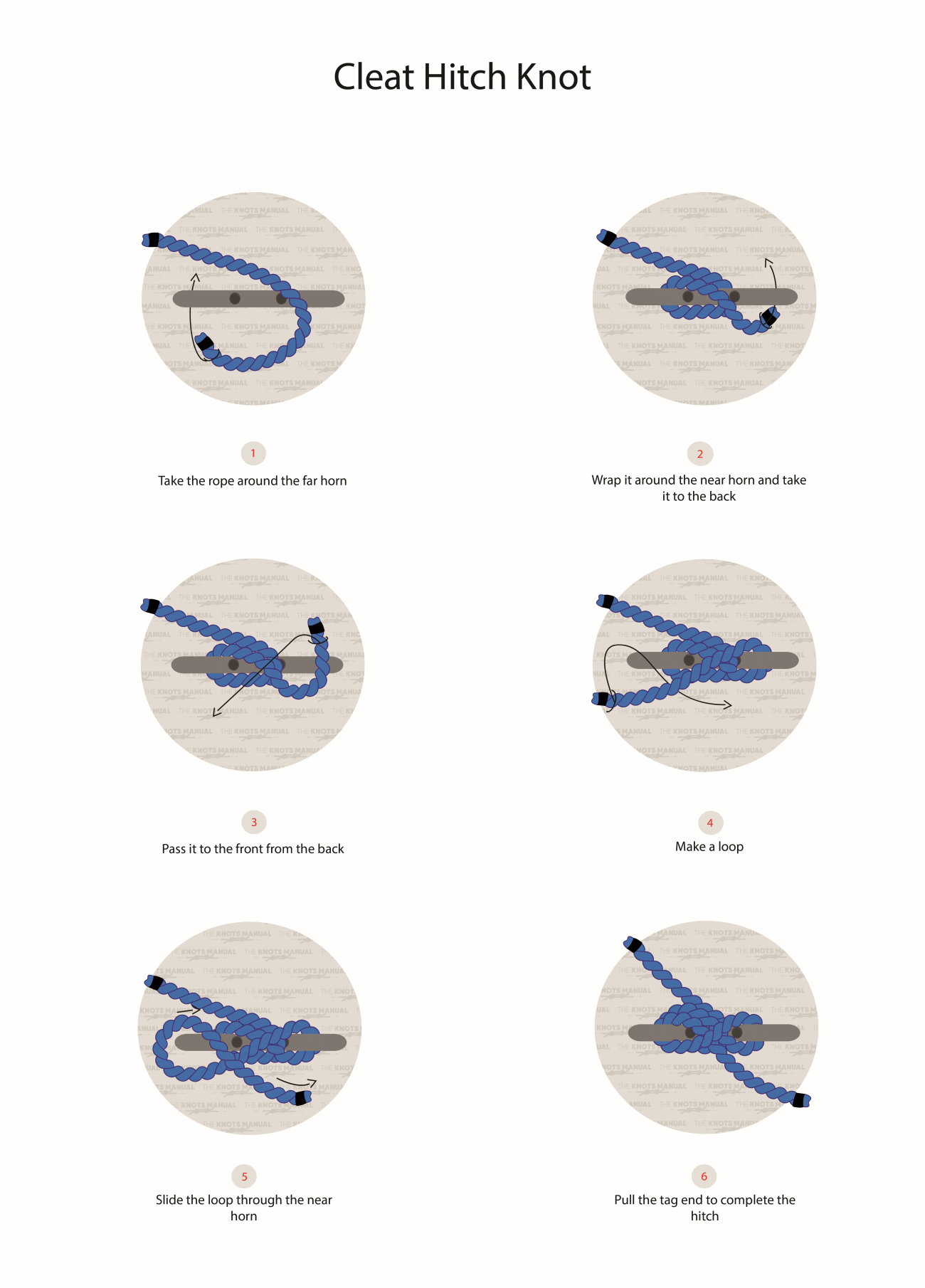
A cleat hitch knot is effective for cleating a mooring line. These knots seem very simple to tie. Yet, they aren’t secure when done incorrectly.
New boaters must take care to learn the tying technique. Learning the right technique prevents their vessel coming loose and drifting away.
Boaters must know when to use a cleat hitch or when to use a different knot. Simply, if a cleat is available, use a cleat hitch. Use another knot when no cleats are available.
Cleat hitches are effective because they don’t jam when tied correctly. They are also quick and easy to tie.
According to The Ashley Book of Knots, the cleat hitch has several variations. There is no single correct way to tie a cleat hitch. Boaters often remark that no two boaters tie their cleats the same way.
The important thing is that cleat hitches are tied with the right technique. Consistency is key.
Some boaters like to display their skills by making a “flying” cleat hitch. They stand a few feet from the cleat and throw the line onto the hitch, so it coils. Of course, they must tie the rest of the knot by hand.
How To Tie A Cleat Hitch

Follow these six simple steps to learn how to tie a cleat hitch:
Step 1:
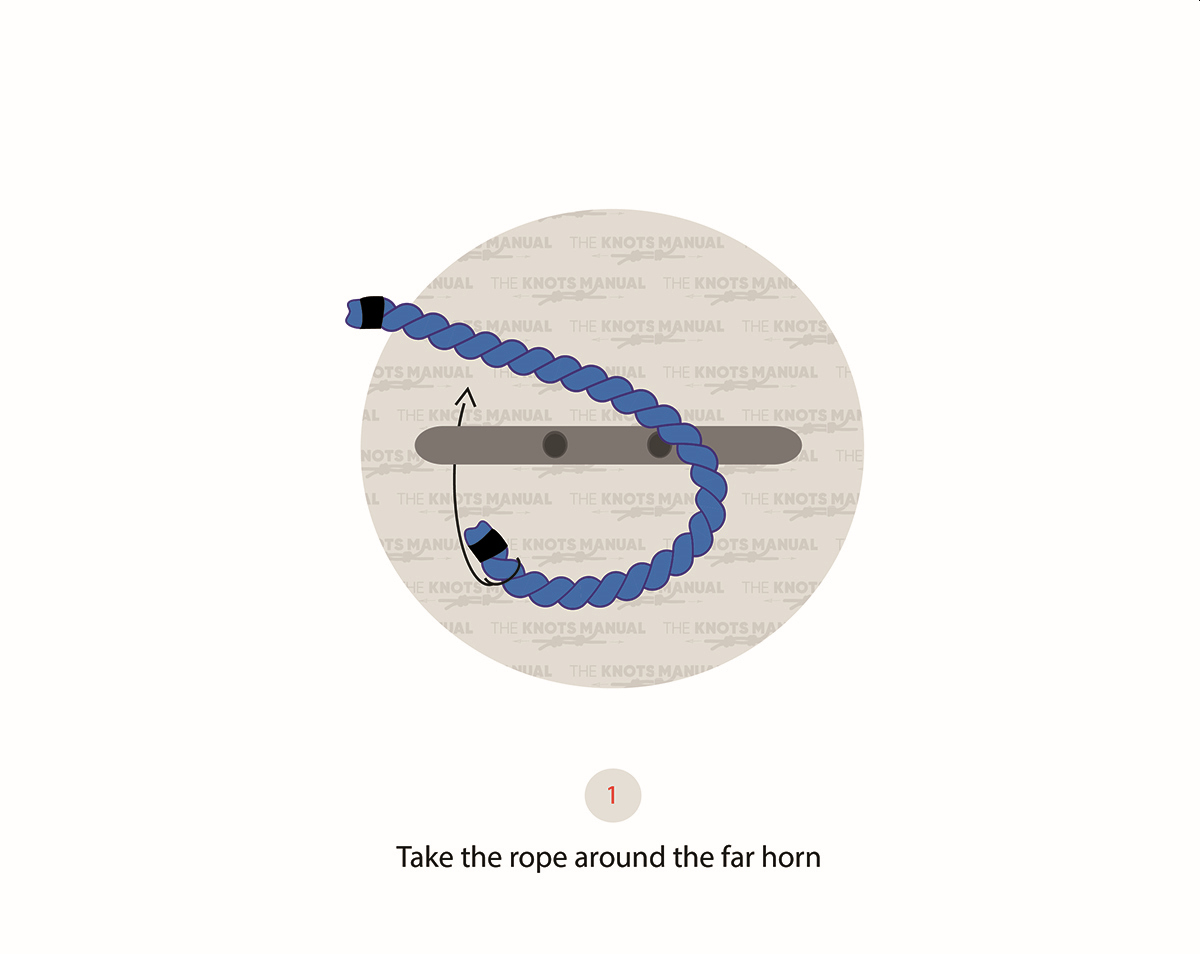
Wrap the rope around the boat’s far horn.
Step 2:
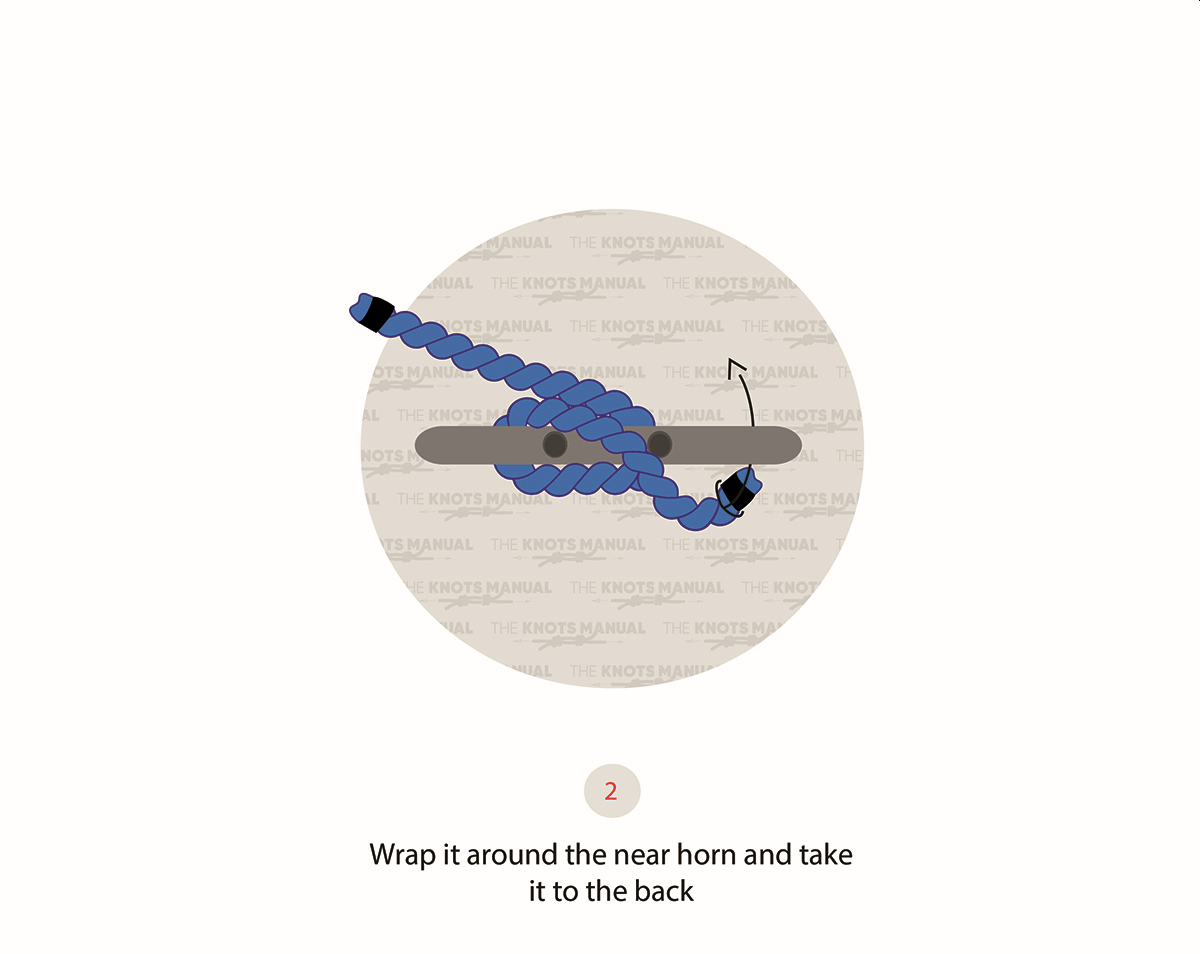
Wrap the rope’s working end around the near horn and pass it around the back.
Step 3:
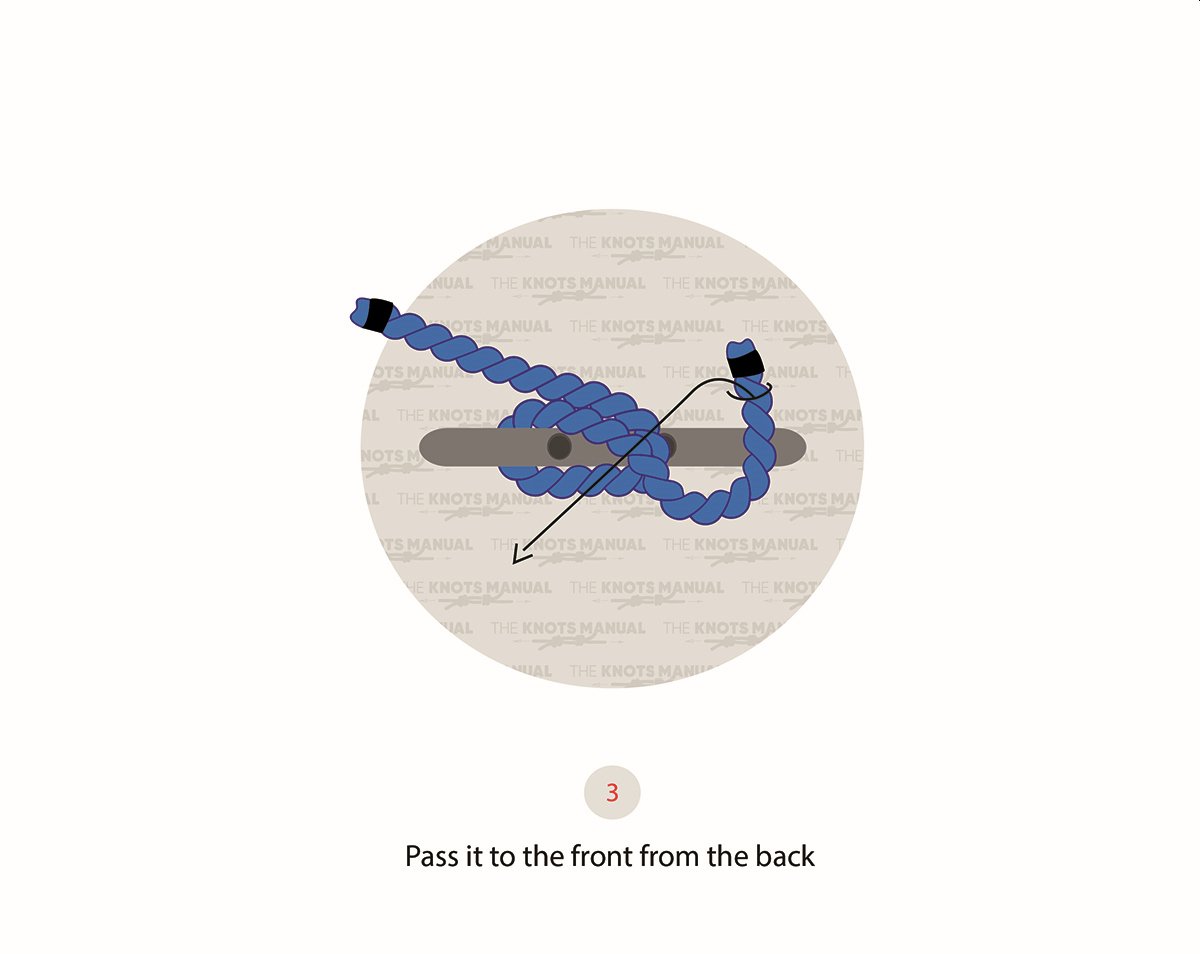
Pass the working end around to the front of the horn.
Step 4:
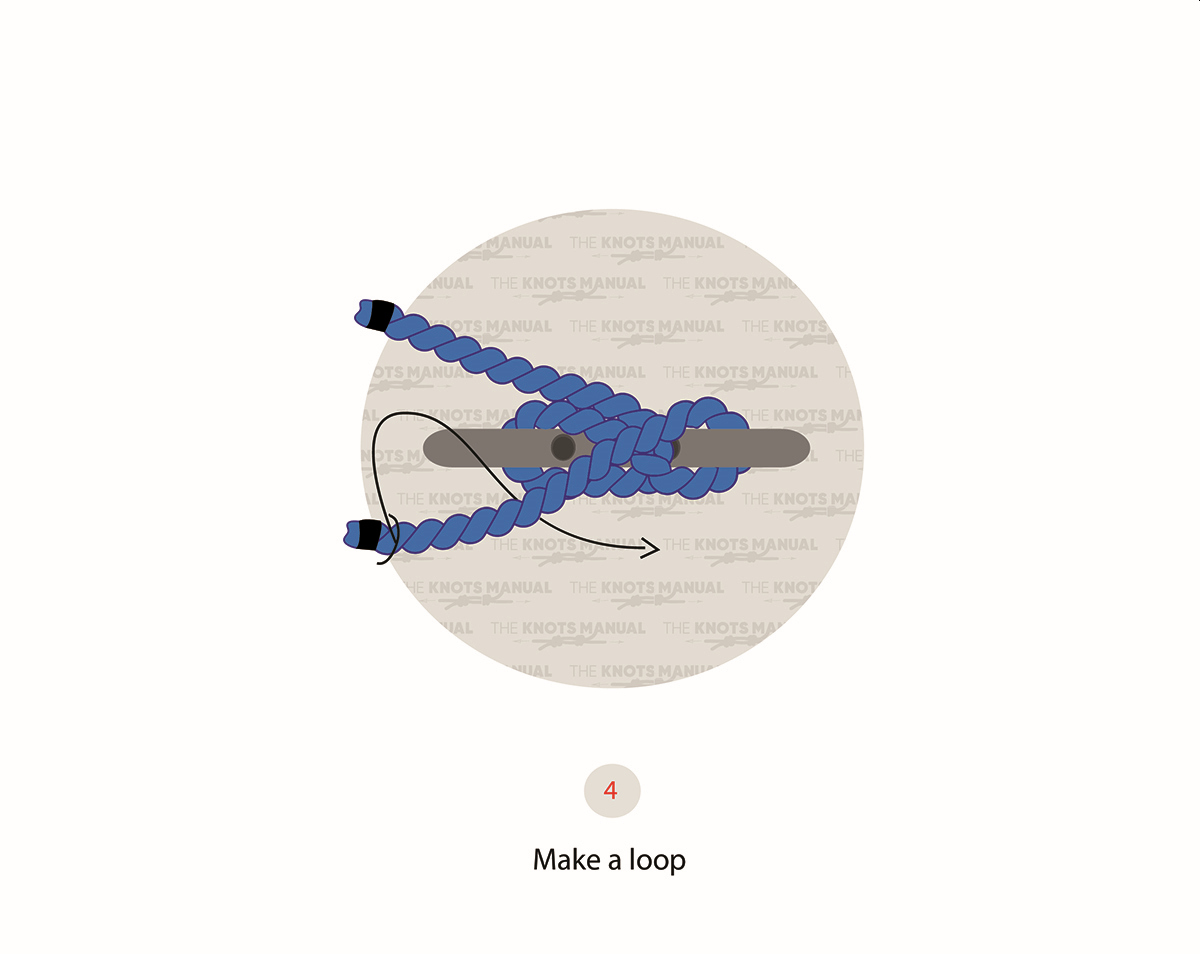
Create a loop in the working end of the rope.
Step 5:

Slide the loop over the near horn.
Step 6:

Pull on the working end to tighten the knot.
Notice that the knot above is made without a locking hitch. A locking hitch is a metal pin with a lock on one or both ends.
A locking hitch is not typically used for mooring large vessels or towing and sheeting a sail. Large vessels need to be released quickly; a locking hitch is unsafe.
A locking hitch is necessary when working with smaller vessels. They are especially necessary on boats that are moored for long periods. A locking hitch is typical with sail halyards of small boats, flag halyards, and yacht dock lines.
* It may be necessary to add more turns than we describe above. Few turns were used for the knot in The Ashley Book of Knots.
So few turns were likely the result of the rope boaters used at the time — natural hemp or manila.
Today, boaters use thinner, stronger, and slippery synthetic materials. These types of ropes often need extra wraps. Cleat hitches handling extreme loads will also likely need extra wraps. *
What Are The Uses Of A Cleat Hitch?
The most common use of a cleat knot is for tying a boat to a cleat. Boaters use this hitch to securely moore their vessels to a dock.
Less commonly, boaters use cleat hitches for towing another boat or cleating a sheet.
Knots Similar To The Cleat Hitch
Barrel Hitch: These knots are tied around a barrel or similarly large object. The hitch lifts the barrel upright and allows for easy moving. These knots are common when moving barrels open at the top and filled with liquid.
Munter Hitch: These knots are mostly used by rock climbers and mountaineers. They allow climbers to belay and rappel without using a belay or rappel device. These knots are very secure when tied correctly — they must be, as the climber’s life is on the line. Yet, they commonly cause kinks or twists in the rope.
Rolling Bend: These knots are common for moving logs, poles, and other objects.
Timber Hitch: These knots help move posts and other cylindrical objects. They are ideal for working with heavy loads because they do not jam or slip. They are simple to tie and untie, even after bearing heavy loads.
FAQs
How Secure Is A Cleat Hitch?
Cleat hitches are very secure when tied correctly. Their security is essential as they keep a boat moored to a dock. The knot could come loose without security, and the vessel could drift from the shore.
Still, to be effective, boaters must tie the knot correctly. New boaters are often fooled because it seems simple to tie the knot.
Boaters secure a dock line to a cleat by wrapping the rope or line around the horn. First, they must wrap the line around the horn furthest from them. Then, they wrap it around the horn nearest them. It’s vital that this sequence is followed, or the knot may jam.
What Is A Cleat?
A cleat is a piece of metal or wood in the shape of a “T.” They are often found on boats and ships, where boaters wrap their ropes. Usually, cleats are on the sides of boats and decks.
Cleats are most often used to moore vessels to docks, especially for long-term use.
Cleats must be sturdy and corrosion-resistant.
What Is A Halyard?
A halyard is a rope boaters use to raise or lower a sail. They are also used to raise or lower a spar, yard, or flag. The term comes from the phrase “to haul yards.” In traditional sailing, halyards comprised natural rope materials like manila or hemp.



